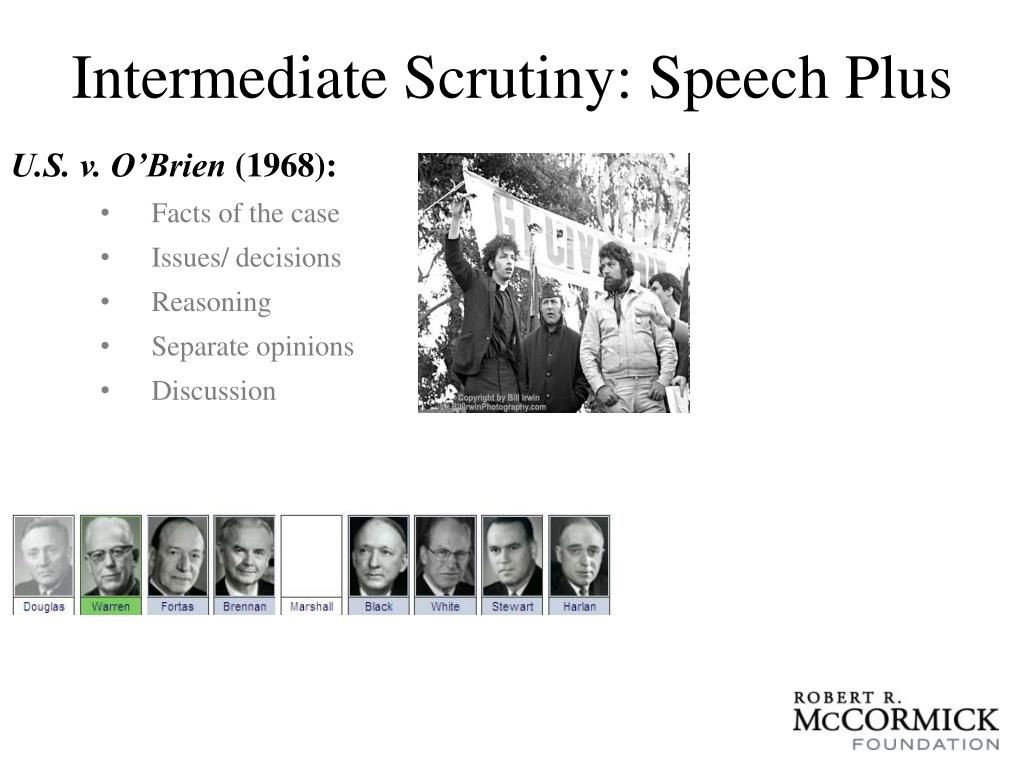

The challengers in NYSRPA, by asking the Court to repudiate the use of the tiers of scrutiny in Second Amendment cases, have opened the way to reconsidering the legitimacy and continuing viability of the tiers-of-scrutiny framework for the first time in decades. Yet, in the aftermath of Heller and McDonald, federal courts have relied almost exclusively on the tiers of scrutiny to analyze Second Amendment cases, almost always purporting to apply intermediate scrutiny. City of Chicago (2010), the Supreme Court relied on the text, history, and tradition of the Second Amendment in establishing an individual right to keep and bear arms - striking down the gun laws challenged in those cases not because they flunked tiers-of-scrutiny analysis, but for altogether different, seemingly categorical reasons. It remains an open question whether it will dominate Second Amendment jurisprudence.

INTERMEDIATE SCRUTINY DEFINITION FREE
This three-tiered method of analysis has come to dominate the jurisprudence of the First Amendment's Free Speech Clause and the 14th Amendment's Equal Protection Clause. Rationality review is highly deferential and applies to many (perhaps most) economic regulations. Finally, a law will survive the third and lowest tier, "rational-basis review," if there is any conceivable, rational reason supporting the law. Laws that discriminate on the basis of sex and content-neutral speech restrictions, for example, receive this form of scrutiny. "Intermediate scrutiny" is similar to strict scrutiny, but the government's burden is reduced generally, the government must show both an important or substantial interest, and that the means chosen to advance that interest are no more burdensome than reasonably necessary. So in theory, under current doctrine, a law that discriminates on the basis of race would be constitutional if the government could meet the two criteria of strict scrutiny. Laws that discriminate on the basis of race or viewpoint, for instance, receive strict scrutiny.

"Strict scrutiny," as the name implies, is the most stringent - it places the burden on the government defending a law to, first, identify a compelling governmental interest and, second, show that the means chosen by the government are narrowly tailored to achieve that interest. It is usually said that there are three tiers. The tiers of scrutiny are elements of a method of constitutional analysis in which courts examine the goal that a law purports to achieve and the means the law uses to accomplish it. It is unclear, at the time we write, whether that tactic will succeed.) Although most popular attention will focus on the outcome of the case, the long-term significance of NYSRPA could be how the justices arrive at that outcome, for NYSRPA poses a challenge to what has become a familiar feature of American constitutional law: the tiers of scrutiny. (The City subsequently changed its licensing regime, perhaps in an effort to make the case go away before the Court could rule on the merits. City of New York concerns a New York City licensing regime that, at the time the Court granted review, prohibited the transportation of any firearm outside city limits. New York State Rifle & Pistol Association, Inc. This year, for the first time in nearly a decade, the Supreme Court will return to the subject of the Second Amendment.


 0 kommentar(er)
0 kommentar(er)
